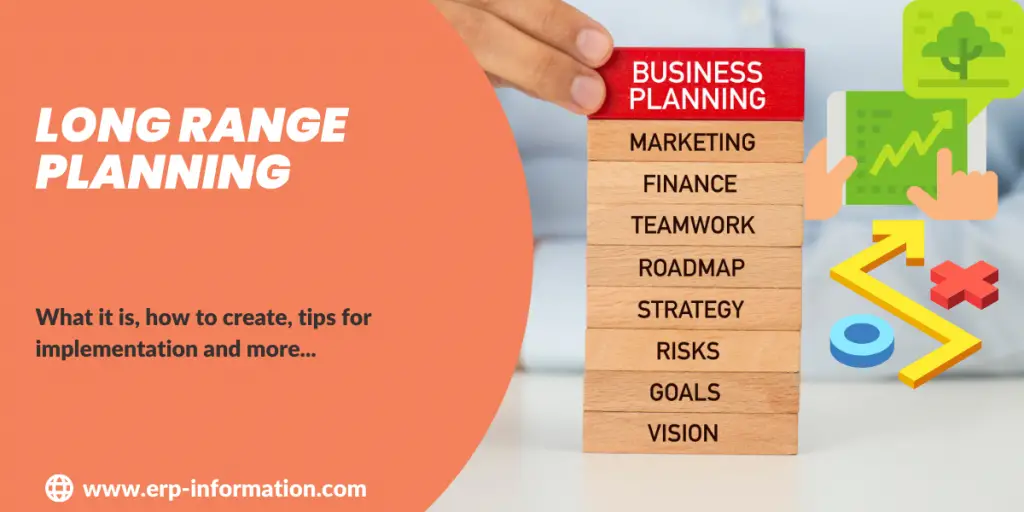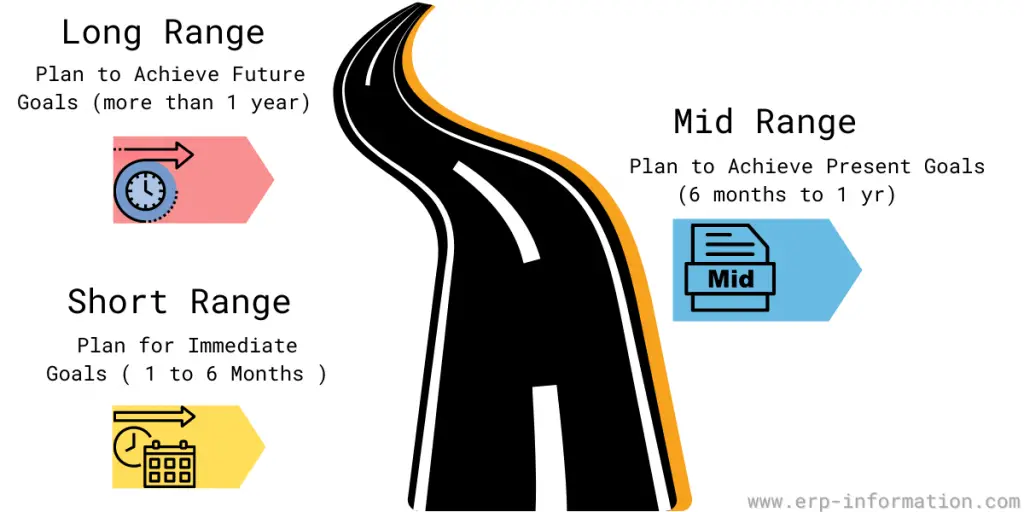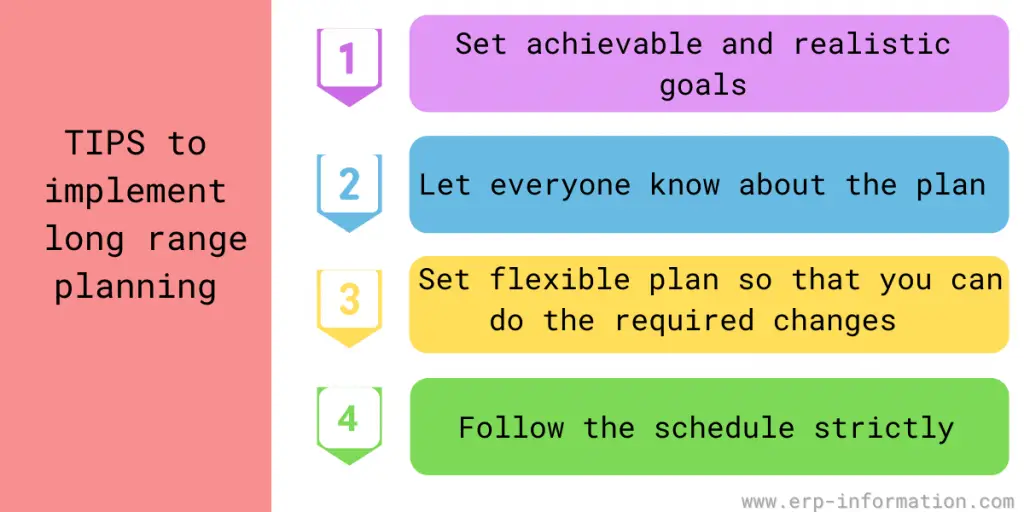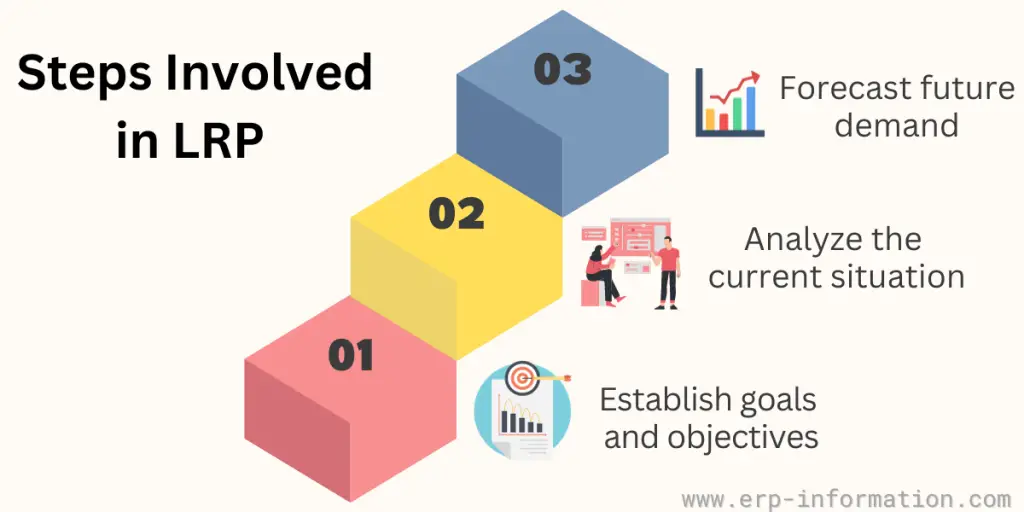Long Range Planning is essential for businesses aiming to thrive in today’s dynamic environment. It involves setting ambitious, long-term goals and developing comprehensive strategies to achieve them.
What is long-range planning? Quite simply, it is the process of looking ahead and making decisions about what you want your business to achieve in the future.
It involves setting goals and objectives that are both ambitious and achievable, as well as identifying potential risks and opportunities. For further insights, read on.
This blog post will discuss the basics of long-range planning, its benefits, tools, and how to start creating your business plan. The post will also provide some tips for implementing the long-range plan.
Long Range Planning Definition
Long Range Planning (LRP) is the process of developing a comprehensive plan to guide an organization’s decision-making throughout its operating cycles.
It is concerned with setting goals and outlining strategies for achieving them over extended periods, typically 3-10 years or more.
It also involves creating a timeline and budget for implementing new business initiatives and strategies.
By setting long-term goals, businesses can establish a roadmap that helps them make informed decisions, stay ahead of the competition, and position themselves for business growth.
When it comes to long-range planning, it’s essential to understand what it is and isn’t. LRP is not the same as strategic planning, although the two are related. Let us see the differences.
Long range planning
- LRP is a more long-term process.
- It deals with things that may happen in the future.
Strategic planning
- Strategic planning is more short-term.
- It is more about dealing with the present and immediate future.
Key Elements of Long Range Planning
1. Mission and vision statements
A mission statement declares the organization’s purpose, while a vision statement defines the desired future state. Both should be clear, concise, and inspiring.
Mission statement
Crafting a mission statement is relatively easy. It can be as simple as stating what the organization does (e.g., “We provide high-quality healthcare services”) or what problem it aims to solve (e.g., “We reduce the incidence of cancer in our community”). The key is ensuring it is relevant to the organization and its stakeholders.
Vision statement
Creating a vision statement is a bit more involved. It should articulate where the organization wants to be and how it plans to get there. It should be aspirational yet achievable, inspiring employees and stakeholders alike. (e.g., “Our vision is to become the global leader in sustainable innovation”)
Mission and vision statements should be reviewed and updated regularly to remain relevant. They provide the framework for long range planning and help keep everyone focused on their goals.
2. Strategic planning
These plans should align with the organization’s mission statement and help to achieve long-term goals. However, organizations will also need to identify potential obstacles that could prevent them from reaching the goals and develop strategies for dealing with those obstacles.
3. Sales and operational goals
Detailed sales and operational goals help to identify activities that enhance revenue and profit.
History
Long-range planning has been a part of corporate life since the early days of the American industry. The world’s economy was stable in the 1950s and 1960s. As a result, many organizations used static planning at that time.
However, in the 1970s, the economy was unstable because of the USA’s improper maintenance of the gold standard. In this situation, static planning was not compatible with the instability of the economy. Hence many businesses started long-range planning.
Many crises, like the oil crisis in 1973, the housing bubble, and the banking crisis in 2008, impact businesses.
To handle all these problems, organizations implemented long-range planning strategies through some techniques like SWOT analysis.
Today, organizations use a variety of approaches and tools to create long-range plans that will help them succeed in an ever-evolving business landscape.
How to Create a Long-range Plan for Your Business?
You can take several steps to create a successful long-range plan for your business. The long-range planning process steps are as follows.
Let the Plan Reflect the Mission
Discuss your business’s core mission and values with your stakeholders. Consider how these align with current market trends, customer needs, and societal shifts. Reflect on the essence of why your business exists and how it contributes to the world.
Create Achievable Goals
Instead of just setting broad goals, break them down into actionable steps with clear timelines and metrics for success. Think of your goals as a series of interconnected milestones leading toward your long-term vision.
Identify Operational Procedures
Take a close look at your current operational procedures and identify areas for improvement, optimization, or innovation. This might involve streamlining workflows, implementing new technologies, or refining communication channels.
Revise the Plan as Needed
Long-range plan is for 5 to 10 years. Hence it is not set in stone but rather a dynamic roadmap that needs periodic adjustment. Identify the changes in the market trend, technology, or internal dynamics of your business and adjust the plan accordingly.
Tips for Implementing Long Range Plan
There are a few tips for implementing your long-range plan successfully:
- First, ensure that the goals you come up with are achievable and realistic. Don’t try to do too much at once, or you’ll risk overwhelming yourself and not accomplishing anything.
- Ensure that everyone who needs to know about the plan is aware of it and understands its role. That includes employees, management, and any other stakeholders.
- Be prepared to make changes as needed. The long-range plan should be flexible enough to accommodate changes in the business environment or goals.
- Stick to the schedule and make sure that everyone involved is held accountable. That means meeting deadlines and ensuring that everyone is doing their part.
Following these tips, you can successfully implement your long-range goal and see results.
Benefits of Long Range Planning
- First and foremost, it allows businesses to stay on track and prepares them for whatever may happen.
- It will enable companies to think about their long-term goals and determine how to achieve them.
- Without LRP, businesses would be more likely to make short-sighted decisions that could hurt them in the long run.
- LRP also helps businesses stay competitive.
- By planning for the future, companies can anticipate changes in the market and adapt accordingly.
- It gives them a leg up on their competitors, who may not be as prepared for changes in the industry.
- Finally, LRP can help businesses increase profits. Companies can make smarter decisions about allocating resources by taking a long-term perspective. That can lead to increased efficiency and higher profits in the long run.
Long Range Planning Example
For example, the CEO of a software company planned a long-range strategy to expand their business into different countries within five years. They believe this move aligns with the company’s mission of providing innovative solutions globally.
That long-rang plan might have the following things.
A mission statement that associates the long-range plan with the company’s values.
A description of the extension such as the number of countries in which the company plans to extend business.
Detailed information about the departments and their responsibilities in the plan.
A comprehensive timeline with specific deadlines for key stages of the expansion process, including tasks like identifying suitable rental properties, procuring necessary equipment, recruiting staff, and developing promotional materials.
Set standards to evaluate the extended business in different countries such as prediction of profits and expenses in that new location.
In this way, the CEO initiates the plan during a company-wide meeting and commits to providing monthly updates on the project’s progress to all employees. Each department head sets operational strategies to achieve smaller goals like establishing a deadline for identifying suitable rental options.
If any problem arises during the execution of these goals, the CEO revises the long-range plan and adjusts the plan accordingly.
Tools Used for Doing Long Range Strategic Planning
There are various tools that companies can use for long-range strategic management. The most important thing is to ensure that the tool is adequate for your business and meets your needs.
Below are some of the most common tools, including SWOT, business model, and risk assessment.
SWOT analysis
SWOT analysis is a tool that helps you identify your Strengths, Weaknesses, Opportunities, and Threats. This can help determine where your business should focus its efforts to be successful.
Business model analysis
The business model analysis is a powerful tool that can help you understand how your business works and generates revenue.
It can help you boost your bottom line and achieve your desired results. In addition, business model analysis can help you troubleshoot problems and avoid pitfalls.
Finally, understanding your business model allows you to be better prepared to navigate the ever-changing business landscape.
Whether you’re just starting or have been in business for years, business model analysis can help you take your business to the next level.
Risk assessment
Risk assessment can help you identify potential risks to your business and the organization’s strategic plan to respond. This can help you avoid or minimize any negative impacts that these risks may have.
While planning, using past data as a reference will reduce the risk. At the same time, if you are collecting data and setting industry benchmarks, you must involve empirical research data from a leading international journal reputed for publishing original research papers.
Long-range Planning in Manufacturing
Manufacturing companies use long-range planning to schedule the production of their products. LRP allows them to forecast future demand and ensure they have the necessary resources to meet that demand.
It also helps them identify potential problems and take corrective action before becoming too serious.
There are several steps involved in long-term planning:
Establish Goals and Objectives
Once you have established your long-term goals, it is time to set objectives. Objectives are specific, measurable, attainable, relevant, and time-bound. In other words, they are the steps you will take to achieve your long-term goals.
For example, if your goal is to increase sales by 20%, then one of your objectives might be to improve your marketing budget by 10%. Setting clear and achievable objectives can keep your company on track and ensure everyone is working towards the same goal.
Analyze the Current Situation
To accurately assess your current situation, you must consider your strengths and weaknesses and any external factors influencing your industry. Only with this information can you clearly understand where your business stands and what direction it needs to go.
Strengths and weaknesses are often internal factors, such as company culture or product quality.
However, they can also be external factors, like customer demand or the state of the economy.
So, when looking over your current situation, it’s essential to consider all of these factors to get a comprehensive picture.
Similarly, trends can come from inside or outside of your industry. For example, new regulations could change your business, or a competitor’s new product could disrupt the market.
Keeping up with these trends is essential to ensuring your business remains competitive.
By taking the time to analyze your current situation, you can gain valuable insights that will help you make better decisions for your business’s future.
Forecast Future Demand
Once you understand your current situation, you need to forecast future demand. For example, what products and services will be in the market in the coming years?
Once you complete these three steps, you can begin developing strategies and tactics to help you reach your long-term goals.
LRP in the Supply Chain
Businesses must plan for the future to be as effective and efficient as possible. Long-range planning, or LRP, is a process that allows companies to set long-term goals and develop strategies to achieve them. That helps businesses stay on track and make sure they reach their goals.
LRP is especially important in the supply chain context, where disruptions and unexpected events can ripple effects throughout the entire system.
Planning allows an organization’s current business to mitigate these risks and ensure its supply chain runs smoothly.
FAQs
What is long-range planning in strategic management?
Long-range planning is a strategic management tool that allows managers to think about and plan for the future. It involves creating a plan that covers a period of more than one year and typically five to ten years.
Long-range planning aims to create a roadmap to help an organization achieve its goals and objectives over the long term. To do this, managers must assess the organization’s current situation, including its strengths and weaknesses and its opportunities and threats.
They will then need to create a strategy that outlines how the organization can capitalize on its strengths, address its shortcomings, take advantage of opportunities, and deal with threats.
What is general planning?
General planning is creating a plan that will allow an organization to achieve its goals. The plan is created by assessing the organization’s current situation and resources and then developing a strategy for using those resources most effectively.
Once the plan is finalized, it can be implemented and monitored to ensure it remains effective.
Why is long-range planning important?
Long-range planning is not just about making predictions; it’s an important tool for setting goals, managing resources, and preparing for the future, ultimately ensuring an organization’s success and sustainability. Here are a few points to understand why Long-range planning matters:
1. Future Direction: It provides a roadmap for where an organization wants to go in the long term. Without a plan, you’re like a ship without a destination.
2. Goal Achievement: It helps in setting clear and ambitious long-term goals. Having defined objectives gives purpose and direction to your efforts.
3. Resource Allocation: Long-range planning allows for the effective allocation of resources. You can plan for investments, budgets, and staffing needs more efficiently.
4. Risk Mitigation: It helps identify potential risks and challenges well in advance, allowing organizations to prepare and adapt to changing circumstances.
5. Competitive Advantage: Organizations that engage in long-range planning are better equipped to respond to market changes, gain a competitive edge, and stay relevant.
What are some challenges associated with long-term planning?
Challenges inherent to long-term planning encompass:
Uncertainty: The unpredictable nature of the future makes it challenging to anticipate and account for potential developments.
Complexity: Long-term planning requires a comprehensive consideration of numerous factors, making it intricate.
Inertia: Implementing significant transformations within an organization, particularly a large and complex one, can be a formidable challenge.
Conclusion
Long-range planning is like mapping out a journey for your business, ensuring you’re equipped for whatever may lie ahead. It’s about setting ambitious yet achievable goals, understanding your strengths and weaknesses, and charting a course for success.
By creating a clear mission and vision, aligning strategic plans, and implementing them effectively, businesses can stay competitive, adapt to changes, and increase profitability.
Tools like SWOT analysis, business model analysis, and risk assessment help in this process, providing insights to make informed decisions.
Long-range planning not only predicts the future but also shapes it. With proper planning and execution, businesses can stay on course towards their goals and thrive in an ever-evolving landscape.



